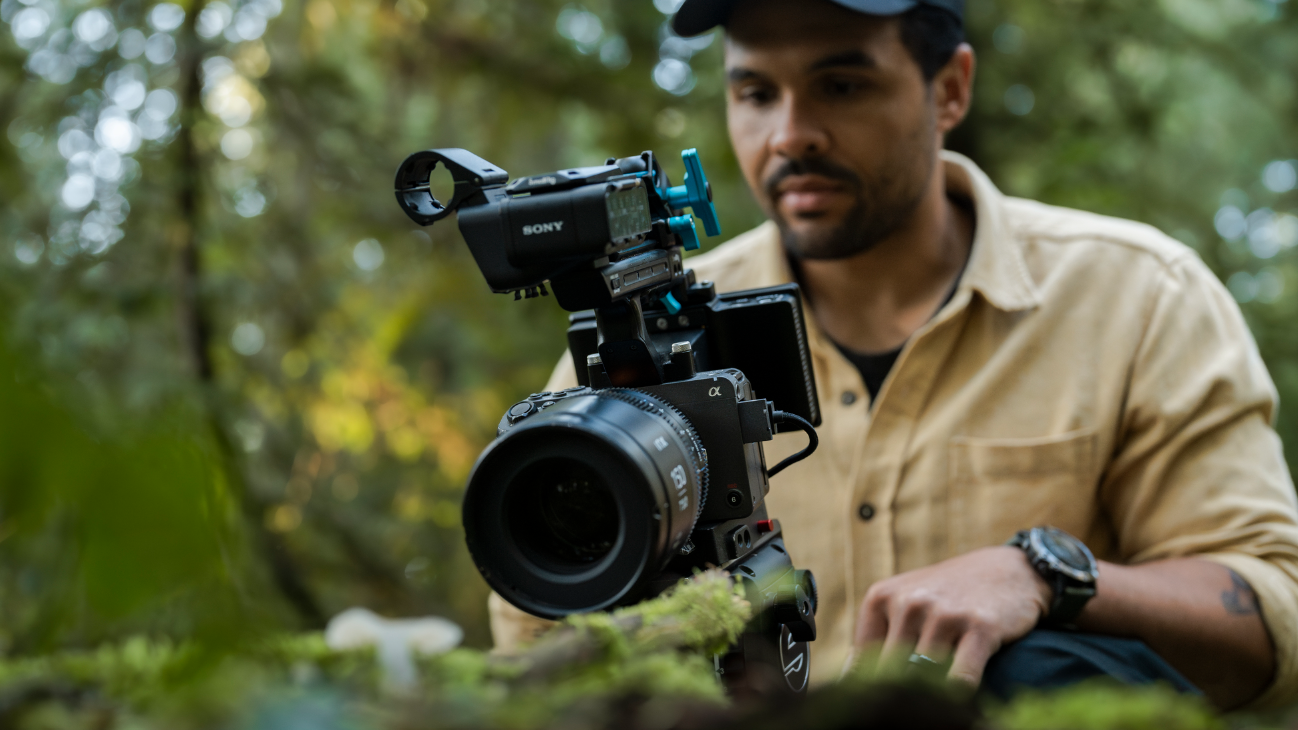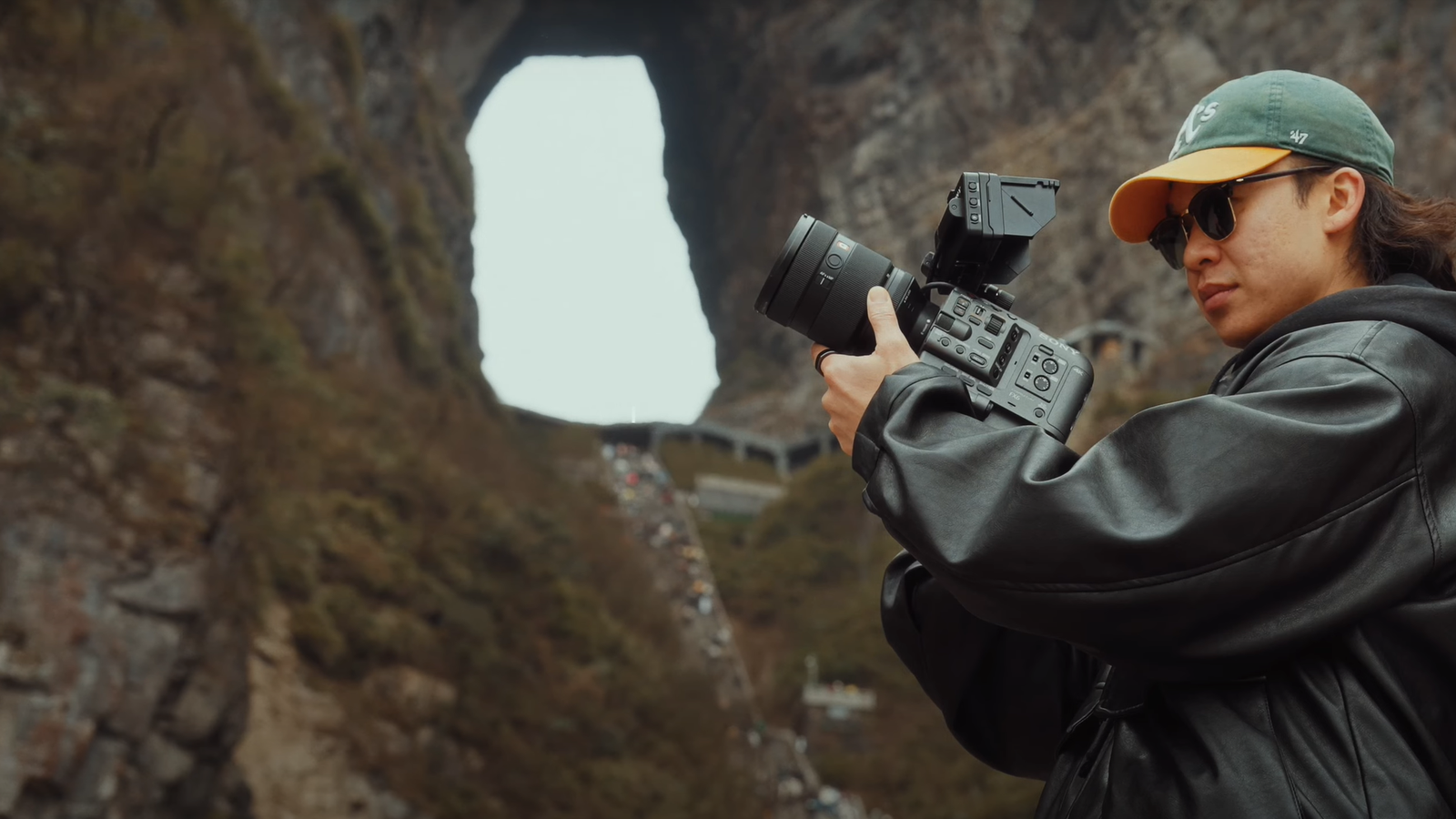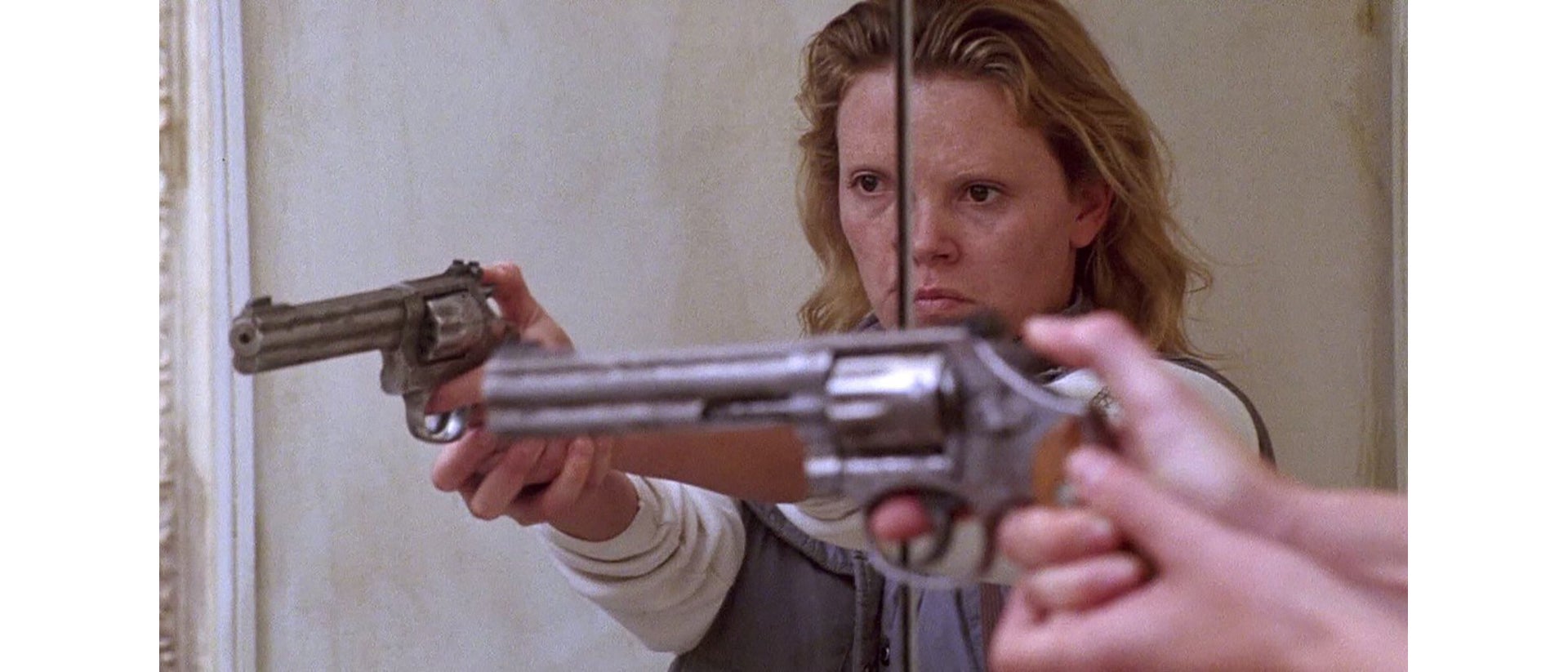
07-20-2020 - Case Study
The Relationship Between the Director and the Cinematographer - Part 2 of a Series
By:
This is Part 2 of a series
Follow this link to read Part 1 - The Relationship Between the Director and the Cinematographer - Part 1 of a Series
Author Steven Bernstein, DGA, ASC, WGA is an ASC outstanding achievement nominee for the TV series Magic City. He shot the Oscar winning film “Monster,” “Kicking and Screaming,” directed by Noah Baumbach, “White Chicks” and some 50 other features and television shows. The second film he wrote and directed, “Last Call,” stars John Malkovich, Rhys Ifans, Rodrigo Santoro, Zosia Mamet, Tony Hale, Romola Garai and Phil Ettinger, is scheduled for release later this year.
Steven can be followed at Stevenbernsteindirectorwriter on instagram where he regularly posts short insights and illustrations about filmmaking.
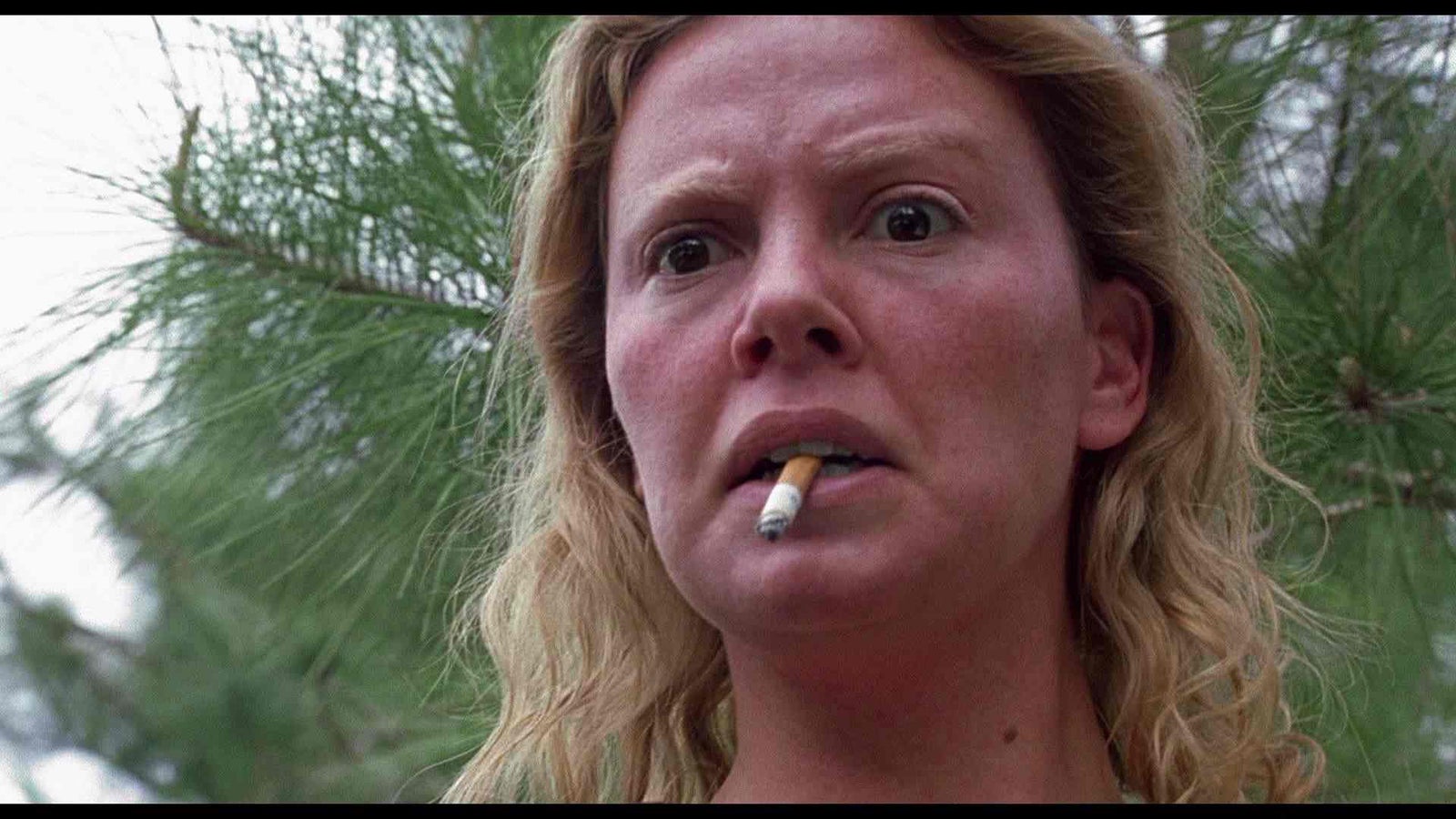
At the meeting between the director and the cinematographer
Much in life is about encoding ideas. When we have a thought, we encode it through language. What we wear and how we look is also a language, in that it encodes something about us to the viewer. Innovation and risk-taking are essential, but with so much money involved, there is also an emphasis on reliability. When the DP comes to the meeting with the director they will want to encode an idea as to who they are. They will want to make clear they are reliable, but also so much more. Indeed, as a director, I feel I am not just hiring a technician, but a collaborator, who will be in charge of that set when I am elsewhere. I will also want to know they can provide creative input and that they can lead a crew.
Looking for leadership
The director leads the crew, but often isn't on set, particularly when shots are being rigged or set up. That's when the DP takes over. The DP is in charge of, or works in concert with, the majority of the technicians. A DP is hugely important, however you slice it. Consider this, the people reporting directly to the DP include the gaffer, the key grip, the camera operator, and via them, the electricians, the grips and the camera crew, which could include multiple cameras. But working in consultation with the DP are the set dressers, prop master, costumers, hair, make-up artists, stunt players, effects, assistant directors, continuity, location managers, and actors. This could be hundreds of people. Managing people is an art, it's complex and requires a real understanding of human needs, aspirations, and eccentricities. It's something that has to be learned and practiced. A leader of people has to inspire people to do their best work. When a DP is that leader, they have to inspire while making sure the work fits into the overall vision established by the director. That means the DP has to work successfully with complex personalities, possibly people with addiction issues, anger issues, jealousies, resentments, and fears. So when a cinematographer comes to the first meeting with a director, good technical skill is important, but the director also has to see in them a sense of calmness, maturity, and organization. The director wants to know the DP will be a good leader.
The DP's crew
If things are going well in the interview, the director will ask the DP about their crew. Are there people the DP works with regularly? Will the DP be open to using local crew if the shoot is on location? There are reasons for these questions.
If a DP has worked with the same crew over a long time, it shows they command loyalty. The director will also know that a team comes with the DP that has worked successfully together in the past and theoretically will work together successfully in the future.
Sometimes things can get difficult at this stage in the discussion. The director may have a favourite crew member they have worked with in the past, perhaps a dolly-grip or a camera operator. This means the DP has to decide whether to give up a crew member to please the director, and/or get the job.
The same thing might happen if the DP has an inexperienced crew. The only way the director might be able to sell the DP to the producer is if the DP is willing to hire a more experienced support team. This can be troublesome for a DP. Film sets are very political and it's great having a crew that is first and foremost loyal to you. But that doesn't mean they are the best crew, and sometimes the most significant artistic growth comes for a cinematographer when they work with new crews. These are hard choices.
Sometimes a DP has to stand their ground at this first interview and before they are hired. If the DP is certain the film will be better as a result of using their regular crew, they must say so. Getting a job is great, but subverting your ability to do that job at the same time is a bad idea. There is nothing wrong with making a thoughtful and reasoned case for your regular crew if there is a thoughtful and reasonable case to be made. As a DP, I had a regular team that travelled with me around the world. They were and are a great crew. But sometimes directors would explain to me they were on a very low budget and though they liked me, they couldn't afford to bring my crew or all of my crew. I always fought for that crew, for me and for the good of the film, but when it was obvious they couldn't be afforded, I would work with local crews to help the director.
Things were reversed when I became a director. I suppose that's a little hypocritical. I was sensitive to the needs of my DPs, but of course, having been a DP for 30 years, I had camera people with whom I felt comfortable and with whom I shared a shorthand. They would know my preferred method of working without my having to tell them. Even which lenses and filters I preferred. Having them on set made me a better director.
Hiring local crews can be a problem. I've had some (but not many) bad experiences when working outside of Los Angeles and hiring local crew at the behest of production or a director. Sometimes the local crew were not loyal or supportive of me, but were rather loyal to the local production manager who provided them with work and would provide more in the future. Sometimes that production manager's interest was not the film’s. So hire locally with caution. Of course the director needs to exercise the same caution in their local hires. That’s why some directors like to take as many of their regular crew with them to location as they can.
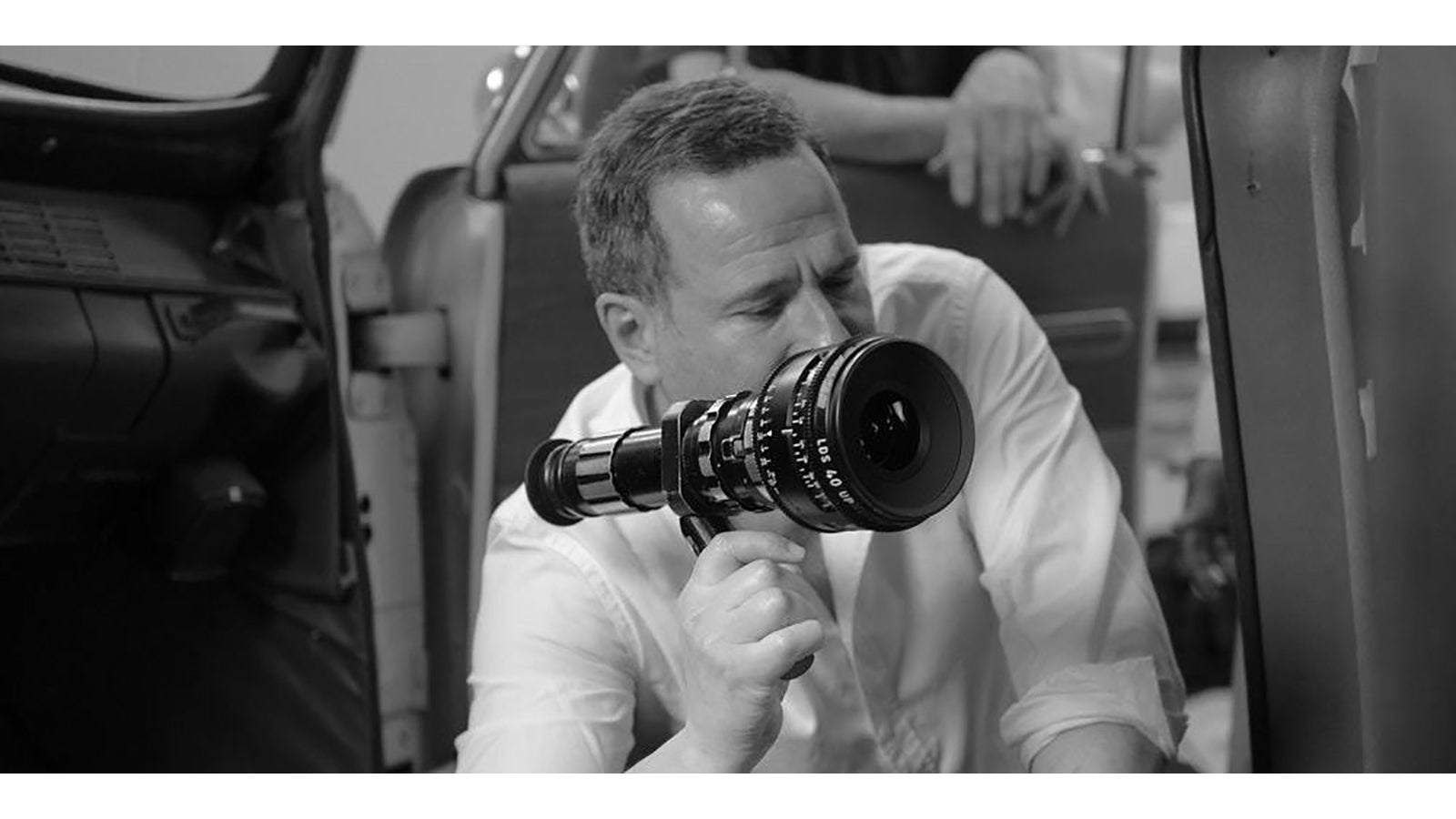
Creative vision
Before a DP goes to an interview with a director, hopefully they would have read the script several times. When I was a DP I would write many notes in the margins and highlight key passages in the script before meeting the director. It's not enough for a DP just to listen at a first interview; they have to contribute ideas if they want to get the job. One thing they can do is talk about their understanding of the script. That is safe. But I think they should also do something more dangerous, explain their vision of the film. Of course, the director will have their own vision, but that is unlikely to extend to things wholly specific to cinematography. Things like the use of colors, hard light versus soft light, moving cameras versus stationary cameras, wide-angle lenses versus telephoto lenses, anamorphic versus spherical lenses. When should the actors be in shadow? Or in dappled light? How often should the close-up be used? Should the film be shot with a hand-held camera? There are so many things to consider that are within the DP’s purview. So it makes sense for a DP to explain to a director how they think these visual elements can be employed to serve the director's vision, both to support it and supplement it.
I mentioned that presenting ideas by the DP at this meeting is a high risk, and it is. The DP's vision may be entirely different from the director's, and the director may reject it out of hand. End of interview. End of the job opportunity. But the best directors are interested in creative collaboration. Even if the DP is not right on the mark with their understanding of the film, floating ideas is a great starting place for longer discussions. Later in the process, if there is a later, there will be a mutual understanding of the visual narrative that will be created in support of the written/spoken one. As a director, I can tell you I am always happier to meet a potential department head, be it a costume designer, a production designer, or a cinematographer, who felt inspired enough by the material that they arrive at the interview bubbling with ideas. It is easier to redirect energy than to generate it.
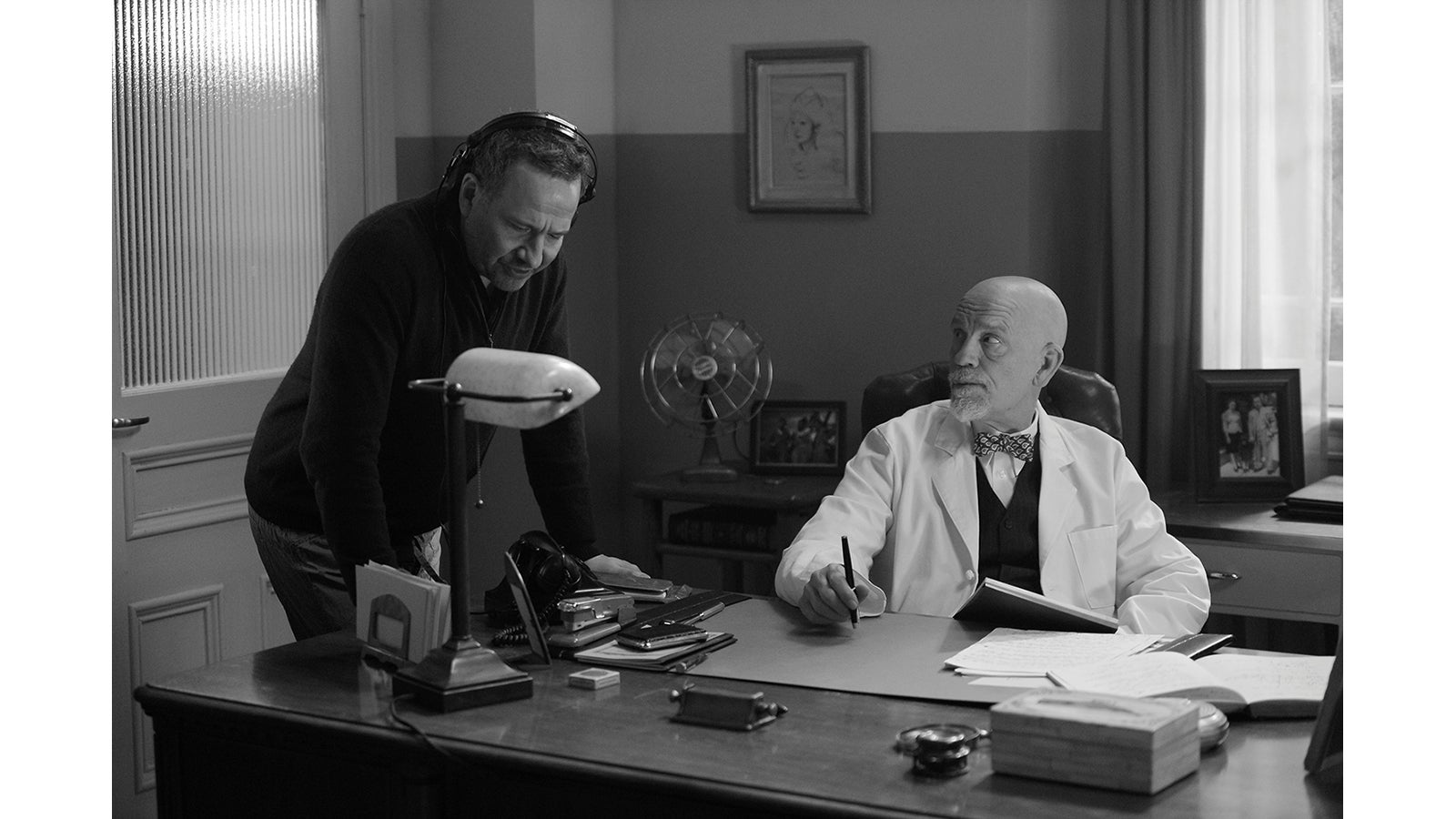
Directors are difficult
When I direct, I find it a lonely occupation. A director will make a few thousand decisions each day (yes, someone did a study), and some of those decisions will be wrong. Sometimes that is because the director hasn't had enough time to think about something and isn't certain what to do. Or sometimes, the right decision simply isn't clear, but they know the wrong decision can be hugely damaging, which makes it hard to make any decision at all, but they are forced to make decisions anyway. There are lots of people around to note when the director gets it wrong. So directors need friends on set, and first among them should be the DP. It's a terrible thing when the DP doesn't step up. For a director to have, for example, a DP who sees themselves mainly as a technician, who just executes shots, is not what I would consider the ideal collaboration. I said before that the director is a unifying intelligence. For that concept to work, people like the DP have to take the director's general notions and run with them and try to make them greater. Sure, sometimes the DP might need to be redirected or reigned in, and that is tough, but when they get it right, not only are they making the job of the director easier, they are making the film much better.
Of course, directors come in all shapes, sizes, and personality types. Some are insecure and narcissistic. These are sad cases. It is more important to them that they are celebrated and worshiped than that they make the best possible film. That narcissism may have got them to where they are, but it rarely serves the film and is often their undoing. These types of directors are threatened by the proactive DP and work hard to suppress the DP's creative energy. To them, the creative DP is a threat, something that will take attention away from them. They do it with every other department head as well, and the inevitable result is the film fails. Tragically, the film sometimes succeeds anyway, and then these directors are around for a long time. As awful as these directors are, there is a way for the DP to work with them, and it's a good general practice anyway.
1. The DP shouldn't take the disrespect or the lack of seeming interest or the occasional insult, personally. They should keep doing their job. They should think of it like the military. They can't quit, and they can't hit a senior officer. They should think of it as a stoical practice. It will make them strong. But whatever the director does, they can't lash out.
2. The DP should keep offering up good ideas and keep supporting the director's vision as they understand it.
3. They should keep leading the crew and keep being a positive, creative force.
Sure, not all their ideas will get through or even be recognized. They will be hurt and insulted. But more importantly, if some ideas do get through, they have helped make a better film. That, after all, is their job. Their job is not to be celebrated or revered or even necessarily treated with respect. But ultimately all those things will be accorded to them if they quietly stay the course, do the right thing and make the best film, sometimes despite the director.
Sometimes difficult directors aren't always as bad as they seem. Whenever a person is under as much pressure as a director usually is, there is an inevitable paranoia that creeps into their perception. It is wholly understandable. If you are a director, people ARE talking behind your back. People are second-guessing you or thinking they can do your job better. It is an occupational hazard. So every director goes through at least one period of being hyper-vigilant. This is a dangerous time for those around them. The DP is one of the director's closest confidants. If they join in the second guessing or spend more time speaking with the producer than the director, the stressed-out director is going to feel undermined. A DP may not like a director, but they must be absolutely loyal to them, and harder, they have to let the director know that they are loyal. That is part of the job. A DP can express their opinions quietly and privately to a director and even disagree, but they should let that director know that ultimately, finally and absolutely, the DP supports them. What makes this especially hard is that DPs are freelancers and they want to be recognized as able, even when a film is failing. This is what they believe will get them work in the future. If everything is going wrong, the inclination is for the DP to say that they have a better idea, or they know what the director is doing wrong. I think this is always a bad idea. What people remember most about a person is their character, and a freelancer doesn't want to be known as difficult and disloyal. Trust me, no one will remember the awful circumstances that lead to the DP's bad behaviour, they will only remember the bad behaviour. So a DP has to exercise self-control. They should make the film better by supporting the director with a constant flow of good creative ideas. The political energy should be saved and spent instead on the creative support of the director the DP might detest. It is a test of a DP's character, but at the end of the film, it is better for ones reputation to be known as a consummate professional than an adept set-politician. As for those difficult directors, forgive them. I have been in their shoes. I will be again. Fortunately, I behaved better. But let me say again; it is a very hard job. You are isolated and you know the support that is available is tenuous. Being a director doesn't always bring out the best in a person, and requires great strength of character. And needs a great deal of support.
But wait, you are thinking, wasn't this all about the first interview? It is, and it isn't. The director is making a decision about something that has been described by many as a marriage. A marriage agreed after a speed date. A marriage that will immediately be put under enormous pressure. So the director will be looking into the face of the DP and trying to see the future, and the DP will be looking back and trying to imagine the same thing. The entire subsequent relationship and the nature of all the work that follows will be determined at this one meeting.
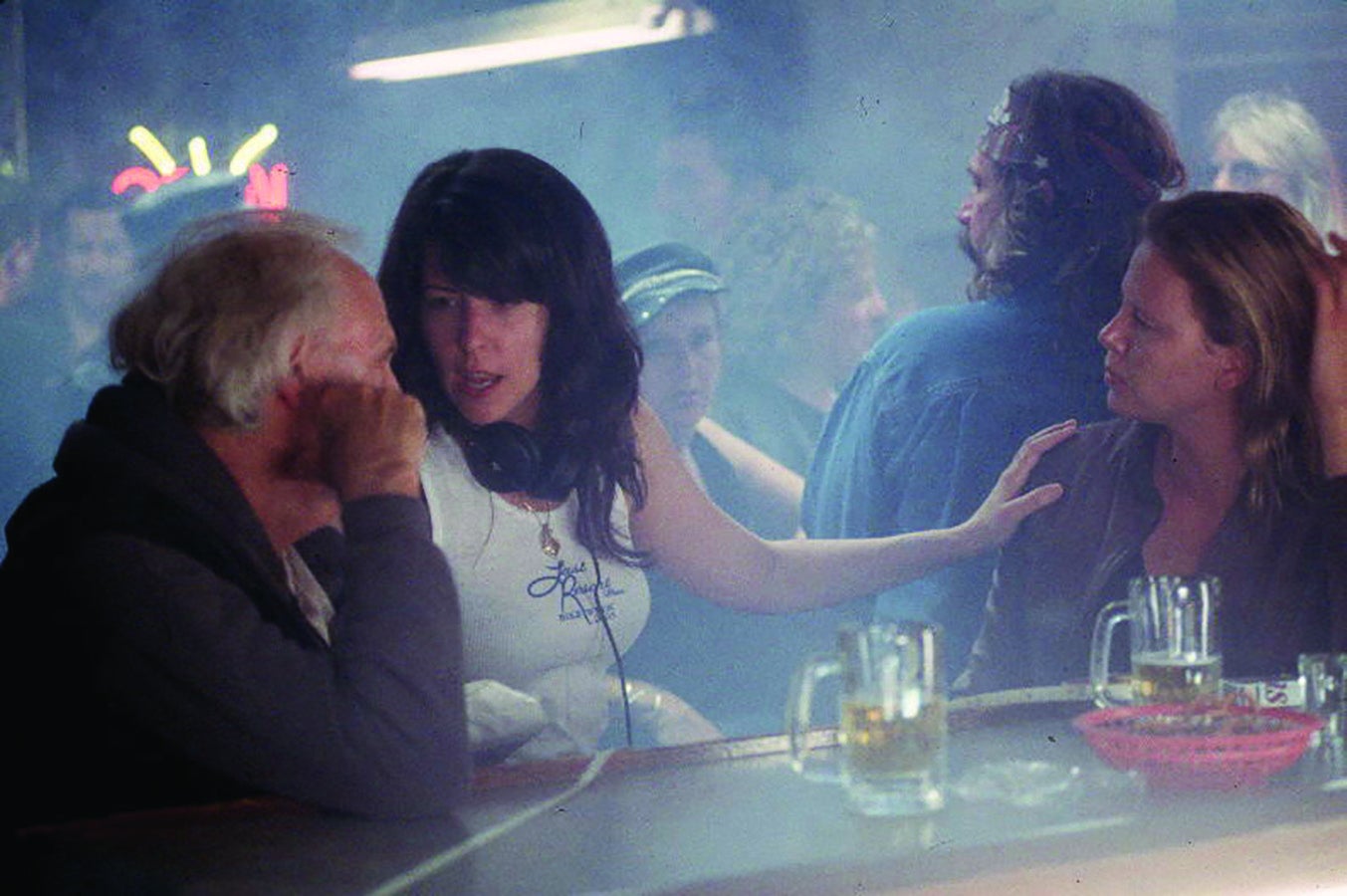
Director Patty Jenkins and Charlize Theron at work on "Monster"
I have had the good fortune to have worked with some great directors when I was a DP. Patty Jenkins who directed “Monster”, Jon Favreau who I worked with a couple of times, who went on to direct massive studio films, I worked with Oscar-nominated Noah Baumbach three times, Keenen Ivory Wayans, Ernest Dickerson, and many more. I was very lucky, and I learned from all of them.
Noah was one of the first directors I worked with after my return to America. We did the iconic “Kicking and Screaming” together, and then another really interesting film that hasn't gotten the attention it deserves called “Mr. Jealousy.” It's a great example of a collaboration between a director and a cinematographer. Noah and I had worked together already, so we had developed the intellectual shorthand the best partnerships create. We knew that we wanted to spend a lot of time together in preproduction, doing pre-visualizing, and we did. Noah was interested in paying homage to the French New Wave films of the 60's. So we looked at a great many of those films together and studied how the camera was used, how shots were composed and how the scenes were cut. We then went over the script, page by page and determined how we would shoot each scene based on these ideas but then added some others into the mix. We were looking for a color palette and to me the illustrations of Maxfield Parrish seemed intuitively appropriate. Noah liked the idea. So we looked at Parish's art and working with the art director, determined the colors we would use in the film. I put together a selection of gels to put on lights that could subtly re-create the colors we saw in Parrish's illustrations. I lit from below to create a sense of iridescence that you see in the illustrations. When all these elements came together, along with Noah's great writing and our remarkable cast, we created an elegant and charming little film; the result of Noah's vision and I would like to think, our collaboration. It took us four weeks working in his apartment in Greenwich Village, but the labour was worth it. It also meant that when I was on set, I knew exactly what to do, because we had worked it out in detail in the preproduction. I didn't have to wait for Noah's instructions.
Patty Jenkins and I did “Monster” together, and it was another satisfying collaboration, though I had much less time with her to prepare. We had particular problems with the time and money that was available to us. We had to devise a way to realize her vision but while working against the clock and without the ability to throw money at the issues. So we didn't as much to collaborate about color and composition as we did about shooting methods. Patty made clear to me that she wanted Charlize Theron to have as much freedom as possible to pursue her intuitions in her performance. So I proposed that we do away with the traditional marks for actors. Instead, I had many marks on the ground but only for the crew to reference, and Charlize didn't have to look at them. The focus puller was off to the side, watching. Wherever Charlize went, the focus puller would see what mark she was nearest to and roll the focus accordingly, so she could go where she felt was right. In support of Patty's notion I extended our plan to the lights, and we used moving light sources on fish poles. The electricians handling these lights were in radio contact with me, and I would move the paper lanterns on the poles to strategic positions to create the lighting balance and shadow modelling on Charlize and the other actors we wanted. If the actors moved, the lights would move with them, which meant they could go wherever they wanted. Finally, we took the same philosophy to the camera. We often used two hand-held cameras, and those cameras moved with the actors and moved with the lights. Complete fluidity. The result? We moved very quickly. One day we did forty set-ups at five different locations. Forty set-ups are a lot on a feature film, particularly feature films that go on to win Oscars. But it wasn't just the speed at which we shot, these techniques facilitated the brilliant performances at the heart of the film. Again, because Patty and I were of one mind, we could achieve her vision and at remarkable speed. It was breathtaking to experience, and when DPs and directors are fully cooperating with each other, it is amazing what can be achieved.
Looking back, I realize that all the remarkable collaborations I have had in my long career began with interviews, which start conversations which last, really, for months. It is those conversations that make a director interested in a DP. When a director senses a kindred personality in a DP, it makes the meeting exciting, because they know that together they can create something greater than the sum of its parts, like the look I developed with Noah, or the methodology I developed with Patty. It's knowing you can genuinely collaborate that creates the foundation of the director/DP relationship, things grow and blossom from there, and it is kind of magical.
"Monster" Official Trailer
